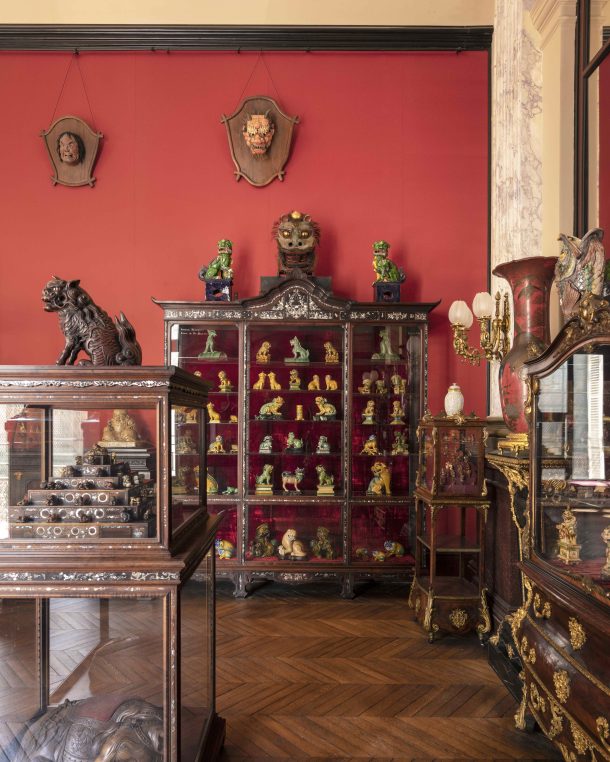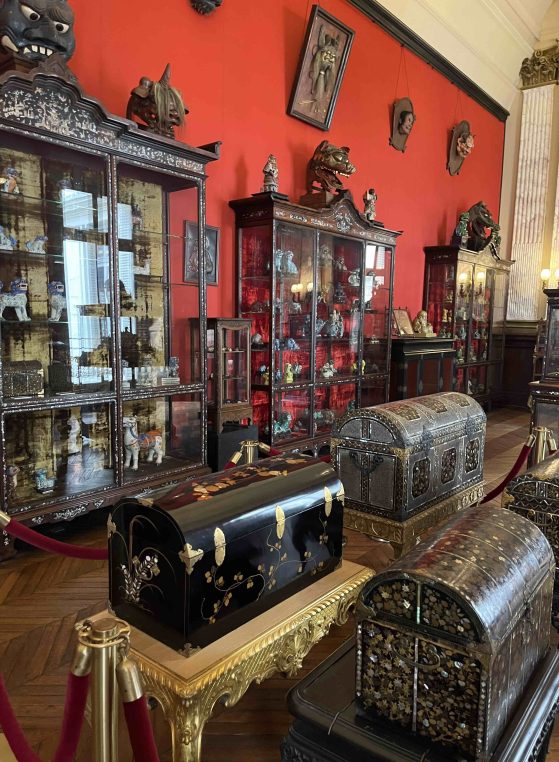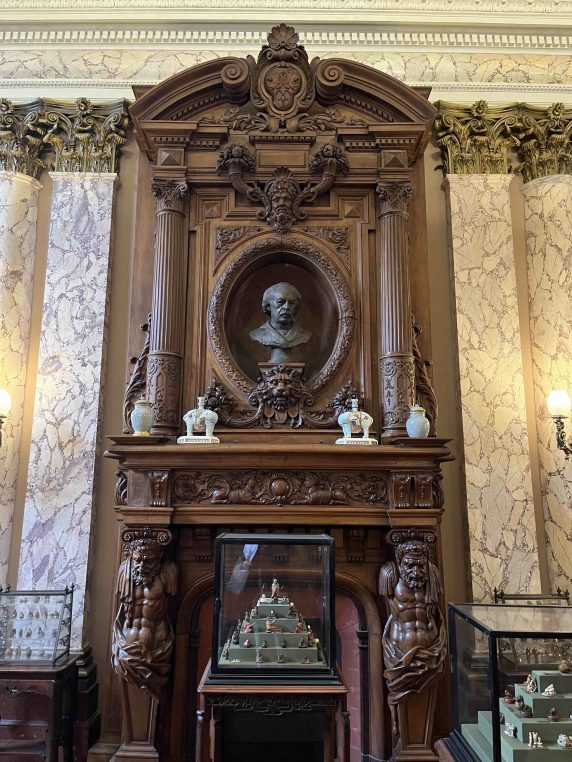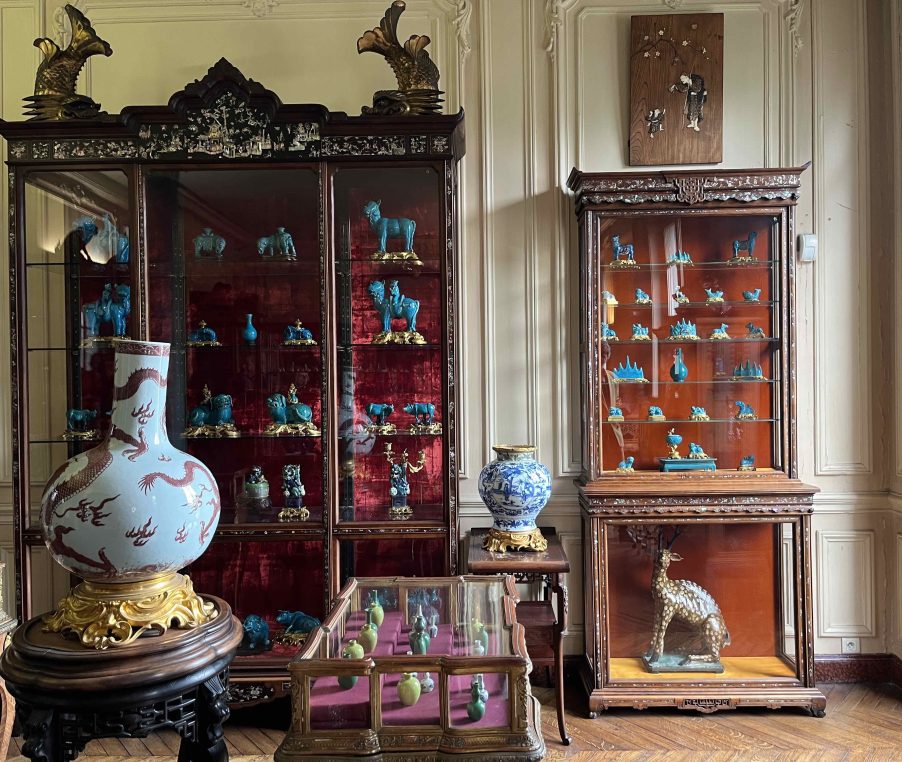
The chests were all made by the d’Ennery for the collection which was conceived for the private museum from the start
I wonder if the reason why the entrance fee to Hotel d’Ennery, at 59 avenue Foch, is free, is because all the collections of Japanese and Chinese art date from the 19 th century when Clémence Desgranges (1823-1898), a comedian, bought them frantically at La Porte Chinoise, Le Bon Marché or other importers of Asian art such as Bing or Hayashi? The idea of visiting the recently reopened hotel particulier built in 1875 (like Sarah Bernhardt’s on rue Fortuny) is more for the craziness of the collection than for its artistic value. Thirty years before the time when Jacques Doucet was building his hotel rue Spontini, avenue du Bois de Boulogne (now avenue Foch) was opening to the high society, and the d’Ennery were among the first to build their house with a large gallery on the first floor conceived as a museum (inaugurated in 1908). They would be surrounded by Mr Ephrussi at n°19, Lebaudy at n°15, Marquis de Breteuil at n° 12, the Yturbe at n°32, Prince Louis de Croÿ at n°66… Why did they build on the wrong side of the avenue (odd numbers)? The fact is that they show a very large collection of netsuke, the Japanese objects who gained a new fame with Edmund de Waal’s book “The Hare with Amber Eyes”.
The true bonus of the visit was to listen to the fascinating Yannick Lintz, President of Musée Guimet, who was just back from a trip to China with President Macron and Catherine Pégard (among other businessmen…) and announced a series of celebrations for the 60 th anniversary of the Franco/Chinese friendship. On January 27, 1964, Diplomatic relations were reestablished with China creating the ire (yes already) of the US who considered de Gaulle as a provocateur. Richard Nixon will finally do the same in 1968, with his “Ping pong” diplomacy visit to Pekin which is celebrated at the moment by John Adams’ “Nixon in China” at Opéra Bastille.
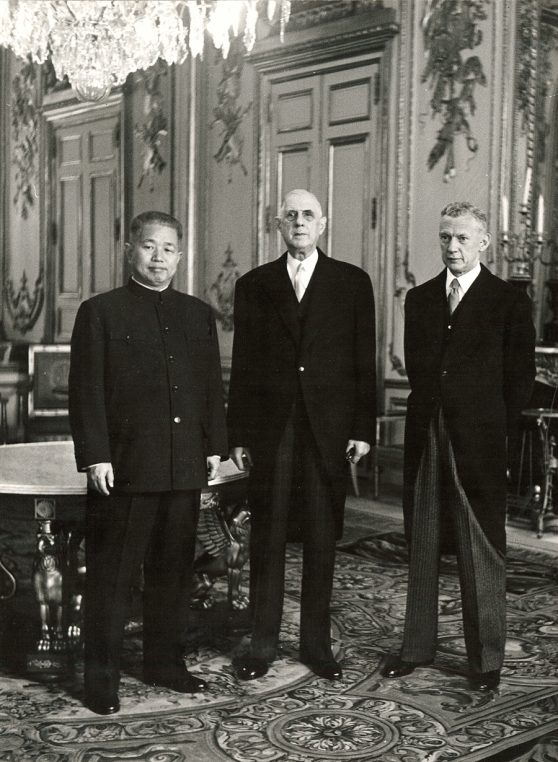
President de Gaulle and Prime Minister Maurice Couve de Murville, welcome the Chinese ambassador Huang Zhen, on June 6, 1964.
Very keen to develop their “Silk Road” project and new Cultural tourism, the Republic of China will send their “Tang” masterpieces from different museums to Musée Guimet in the fall of 2024. And in China, special exhibitions will include Iranian artifacts in tracing the history of the Silk Road through Chinese, Middle East and European relations a thousand years ago. Yannick Lintz who used to be in charge of the Islamic collections at the Louvre, is the perfect go-between expert to create such an exhibition in China.
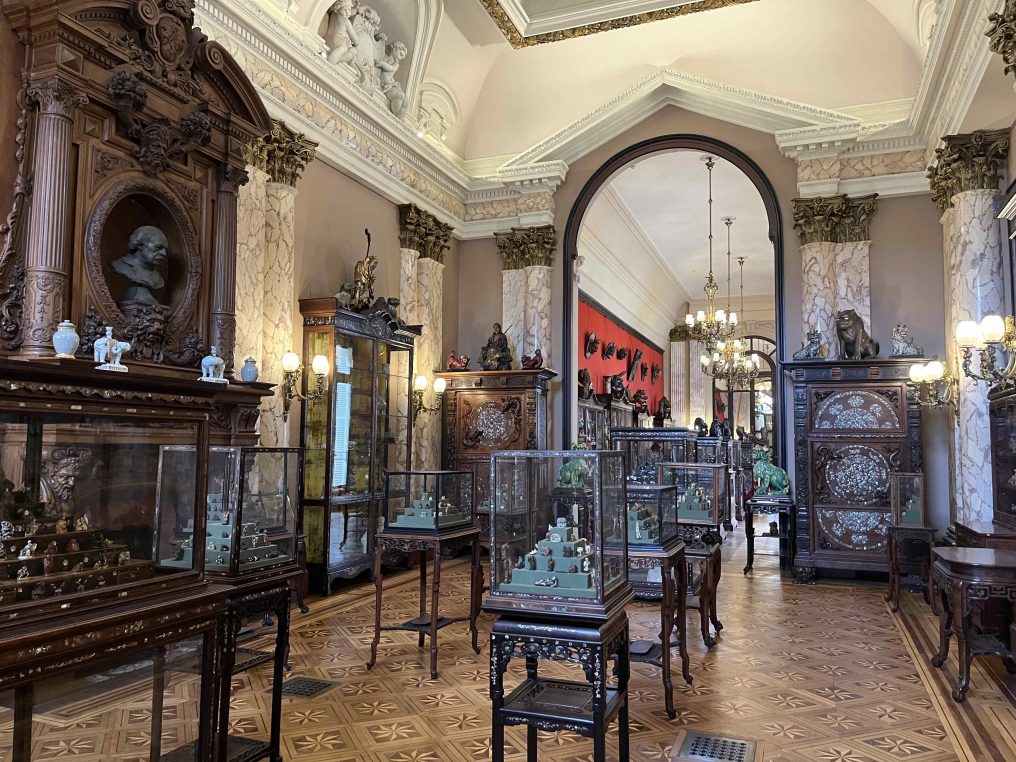
The long gallery is furnished with specially commissioned display windows in mother of pearl and Asian woods
Clémence Desgranges (1823-1898) was the companion of playwright Adolphe d’Ennery (1811-1899), whom she had met in the theatre world. They only married in 1881 (Jules Verne was best man) when her first husband died. Adolphe wrote librettos for Auber, Adam, Massenet and Gounod who was a close friend, and was extremely famous in the 19 th century. He also founded the resort of Cabourg, near Deauville, of which he became mayor in 1855. But the collection and the museum are her own idea and her passion was frantic. One is slightly dazzled while walking through the large galleries literally filled with lacquer trunks and china, masks, furniture and jade or ivory pieces from Japan and China. The Goncourt brothers called it “a ménagerie fantastique”, given the number of strange animals all around.
They entertained on the ground floor (which is closed to the public) and had stables for four horses in the courtyard. The project is to find a private group (who potentially has another collection of Asian art to house) to help finance the renovation of the building and create a tea room. The bulk of 6 000 pieces and house were given to the French state through the intervention of Emile Guimet and Georges Clemenceau (who also convinced Monet to give his waterlilies to the Orangerie) and Musée d’Ennery is a National museum.
Hotel d’Ennery is open for private tours on Saturday mornings by reservation . They are limited to 19 visitors.
Share this Post
